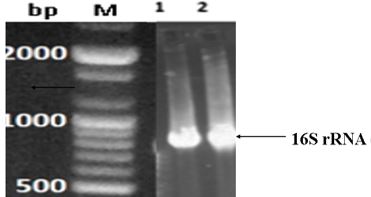Molecular Detection of Pediatric Sepsis Pathogens and Antimicrobial Susceptibility to Antibiotics and Leptadenia hastata Extracts at Federal Medical Center Azare, Nigeria
DOI:
https://doi.org/10.54117/ijph.v4i2.32Keywords:
Sepsis, Antimicrobial susceptibility test, PCR, Leptadenia hastataAbstract
Introduction: Sepsis is a significant public health issue causing high mortality rates in children, with Nigeria being the third-highest country globally. This study aimed to identify the bacterial pathogens responsible for sepsis in children visiting Federal Medical Centre Azare and determine their antimicrobial susceptibility profile for commercially manufactured antibiotics and extracts from Leptadenia hastata.
Methods: Blood samples were collected from children diagnosed with sepsis infections, cultured, and underwent genomic DNA extraction. PCR was conducted to target the 16S rRNA gene, and the bacterial isolates were subjected to sequence analysis and antibiotic susceptibility testing using the Kirby-Bauer disc diffusion method. L. hastata leaf extracts' effectiveness in inhibiting the isolates' growth was evaluated.
Result: The study found that Streptococcus aureus was the most prevalent isolate, followed by Escherichia coli 24 (24.7%), Streptococcus pneumonia 15 (15.4%), and Salmonella spp (3.2%). Sepsis was strongly correlated with age, with children under one month old being fourfold more likely to develop it [COR= 4.28, 95 CI, (1.746-10.493)]. Ceftriaxone, Augmentin, and Gentamicin were the best drugs for sepsis treatment, while 500mg of the plant extract showed the highest activity in ethanol, methanol, and aqueous.
Conclusion: The study found that Gram-positive bacteria were most prevalent and resistant to multiple drugs. The research contributed to identifying L. hastata, which can be used to control infections caused by bacteria resistant to antimicrobial infection, as it has higher efficacy against these isolates. It is necessary to regularly monitor the causative agent responsible for sepsis and their susceptibility to medicines.

Downloads
Published
How to Cite
Issue
Section
License
Copyright (c) 2024 Bashir Mohammed Abubakar, Abdulmalik Isma’il, Ibrahim Musa Moi, Abdullah Mohammad Saggah, Yahaya Mohammed Katagum, Haladu Ali Gagman, Ismail Habibu

This work is licensed under a Creative Commons Attribution 4.0 International License.
